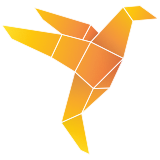CM2 MeshTools® Suite /release 4.7.0
- 4.7.0
- June 2016
- All CM2 MeshTools® Suite
- Major release of the CM2 MeshTools® Suite
- Due to changes in the API, client applications must be recompiled against the new headers
/caveats
- Lib names suffix is
_47for this series. - Visual Studio 2008 is deprecated and will be no longer supported in future versions.
- Windows XP is deprecated and will be no longer supported in future versions.
/new features
All meshers (except Intersect and Layers)
- New functions
data_type::IDs_sorted_by_colorto retrieve easily the groups of elements with same color.
These functions are straightforwardly based on the new functionmeshtools::get_sorted_order(see below) and are provided for convenience only
CM2 HexaMesh
- New output vector
hexamesh::data_type::pathological_boundary_IDssimilar totetramesh::data_type::pathological_boundary_IDs.
This array gives, upon exit, the sorted IDs (i.e. the column IDs indata_type::connectB) of the faces that has intersection(s) with some other hard entities (nodes, edges, faces).
In strict-constraint mode (mode.strict_constraints_level > 0), the generator stops with an error when this vector is not empty. - New mode
hexamesh::operating_mode_type::CONVEX_HULL_MODEsimilar totetramesh::operating_mode_type::CONVEX_HULL_MODE.
In this mode, the mesher 3-D triangulates a set of nodes (data_type::connectB,data_type_connectEanddata_type::isolated_nodes) generating tetrahedrons only.
CM2 SurfRemesh T3, CM2 SurfRemesh Q4
- New functions
data_type::IDs_sorted_by_color_inanddata_type::sort_by_skeleton_colors_in(resp.data_type::IDs_sorted_by_coloranddata_type::sort_by_skeleton_colors) to retrieve easily the groups of elements in the initial mesh (resp. new mesh) with same color.
CM2 MeshTools
- New function
meshtools::get_colors_boundariesto find out the boundaries between elements of different colors. - New function
meshtools::get_elements_on_boundariesto find out the elements sharing some specified boundaries (for instance triangles sharing some specific edges or tetrahedrons sharing some specific triangle faces). - New function
meshtools::get_sorted_orderto get the order of elements according to their color. meshtools::NASTRAN_inputandmeshtools::NASTRAN_outputnow supportCPYRAM(andCPYRA) solid type (linear only).
Converted to and fromCM2_PYRAMID5elements.
COM interface
- New project
ccm2hexameshfor the COM wrapper to CM2 HexaMesh.
/improvements
All meshers
- Some mesh-quality improvements (optimization schemes).
CM2 QuadMesh, CM2 QuadMesh Aniso, CM2 SurfRemesh Q4, CM2 SurfMesh Q4
- Fewer (-30%) triangles in mixed mode (
mode.all_quad_flag = false) on average vs 4.6.
CM2 TriaMesh, CM2 TriaMesh Aniso, CM2 QuadMesh, CM2 QuadMesh Aniso
- Hard-entities (nodes/edges) enforcement scheme fortified.
- Improvements in
CONVEX_HULL_MODE.
CM2 HexaMesh
- Fewer tetrahedrons on average.
CM2 TetraMesh, CM2 TetraMesh Aniso
- Hard-entities (nodes/edges/faces) enforcement scheme fortified.
- Improvements in
CONVEX_HULL_MODE.
CM2 SurfRemesh T3, CM2 SurfRemesh Q4
- Curvatures (like in drill holes) are better taken into account.
CM2 Intersect T3
- Fewer remaining pathologies (hard cases).
CM2 SurfMesh T3, CM2 SurfMesh Q4
(based on CM2 TriaMesh Aniso, CM2 QuadMesh Aniso and OpenCascade, still experimental)
- Much fewer elements in most cases due to new anisotropic meshing of curves.
CM2 MeshTools (whole library)
- Port to Intel C++ Composer 16.0, GCC 6.1, clang 3.8.
- Doc fixes and improvements.
/fixes
CM2 TetraMesh, CM2 TetraMesh Aniso
- Bug in the hard-entities enforcement scheme.
CM2 SurfRemesh T3, CM2 SurfRemesh Q4
- In some circumstances (small, bad isolated patches), the
mode.patch_angle_tolerancewas not respected.
This could lead to excessive geometric errors. - Hard open nodes could be removed during the clean-up phase.
This could also lead to missing hard edges/faces in the final mesh. - With
mode.remesh_flag = falseandmode.optim_level = 0, thedata.colors,data.skeleton_edgesanddata.skeleton_colorsvectors were empty upon exit. - The
data_type::hard_facesvector was not saved bydata_type::savenor read bydata_type::load.
CM2 QuadMesh, CM2 QuadMesh Aniso, CM2 SurfRemesh Q4, CM2 SurfMesh Q4
- Sometimes thin triangles were preferred to thin quads.
MeshTools
meshtools::NASTRAN_outputandmeshtools::FEMAP_output: bug with mixed element types (CM2_FACE_MIX,CM2_SOLID_MIX).
COM interface
- Updated and fixes (warning codes, helpstring, version numbers…)
/breaking changes
All meshers (except SurfRemesh, Intersect and Layers)
- Field
operating_mode_type::reset_external_boundaries_flagremoved.
This flag was used inREGULARIZE_MODEto tell the mesher whether it should recompute the boundary (i.e. matrixconnectB) or use the one provided by the user.
In the latter case, problems could occur when the user-provided boundary was invalid (not closed or not delimiting properly the various colourized subdomains).
Now, matrixconnectBis systematically recomputed inREGULARIZE_MODE(this is fast enough) taking into account different colourized subdomains and user-provided embedded boundaries if any. - To be consistent with CM2 SurfRemesh, CM2 SurfMesh and CM2 Intersect T3, the subdomains’ colour now starts at 0 (used to be 1).
CM2 SurfRemesh T3, CM2 SurfRemesh Q4
operating_mode_type::solid_flagrenamedoperating_mode_type::closed_manifold_flag(usage unchanged).data_type::CM2_NON_MANIFOLD_SOLID_WARNINGrenameddata_type::CM2_NON_CLOSED_MANIFOLD_WARNING(usage unchanged).- Default value for
operating_mode_type::max_chordal_erroris now -0.02, i.e. 2% (used to be 5%).
This leads to finer meshes along curved skeleton lines.
MeshTools
meshtools1d::subdivise(not English) renamedmeshtools1d::subdivide.meshtools::get_mesh_bounding_elements: new parameter (out)nbr_elfe_boundaries.
The vector of IDs is now composite:KBs[i] = Ki*nbr_elfe_boundaries + bi.
To get the element IDs again, divide bynbr_elfe_boundaries:Ki = KBs[i] / nbr_elfe_boundaries;
To get the local boundary IDs, perform a modulo operation:bi = KBs[i] % nbr_elfe_boundaries;meshtools2d::principal_curvatures: ridge nodes are no longer discarded (but low accuracy and curvature directions are out of plane).
